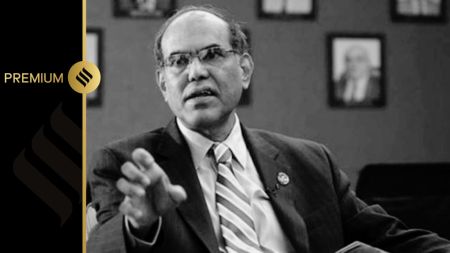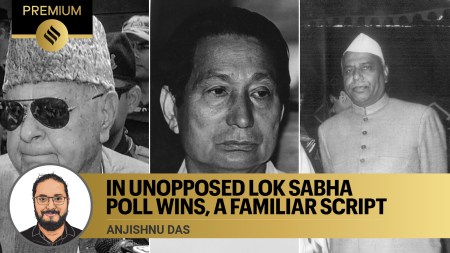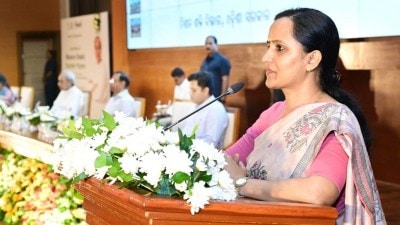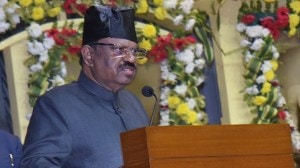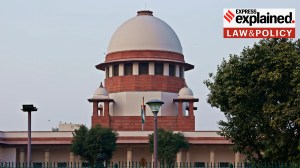- India
- International
Know Your City: Bengaluru’s famed Cubbon Park and the namesake who never saw it completed
Cubbon Park came into being during a time of transition, between the winding-up of the Commissionerate system and the restoration of the Wodeyars as rulers of the princely state of Mysore.
 The park itself was to be a beautiful ornament to the Attara Kacheri, where the administration was centralised, which in Sir Cubbon's time was based in Tipu Sultan's palace, closer to the pete – the Old City area built under Kempe Gowda. (Express Photo)
The park itself was to be a beautiful ornament to the Attara Kacheri, where the administration was centralised, which in Sir Cubbon's time was based in Tipu Sultan's palace, closer to the pete – the Old City area built under Kempe Gowda. (Express Photo) In a city that prides itself on its gardens, some invariably stand a cut above the rest. Bengaluru’s Lalbagh, for instance, dates back at least to the time of Tipu Sultan and Hyder Ali. Cubbon Park, on the other hand, opened over a century later during peak British rule but has nevertheless proven to be a worthy rival.
To tell the story of Cubbon Park, one must tell the story of the men behind it. The park came into being during a time of transition – squarely between the winding-up of the Commissionerate system and the restoration of the Wodeyars as rulers of the princely state of Mysore. The story must begin with Sir Mark Cubbon – a man whose memory is at least in part preserved because of what the park means to the people of the city, but who did not live long enough to lay eyes on it.
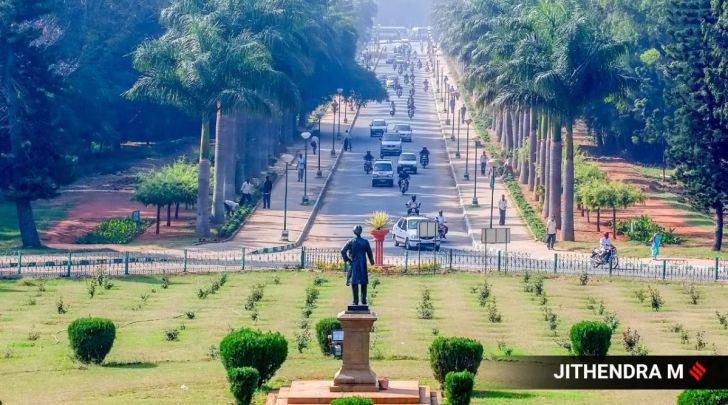
A Manxman who set foot in Mysore
Far away on the Isle of Man in the Irish Sea, the parish of Maughold, which even today barely has a thousand inhabitants, has a stone slab commemorating the final resting place of Lieutenant General Sir Mark Cubbon. A Major
in 1823, the man had risen to the post of Commissary-General under the Travancore Resident by 1827, according to the 1885 Manx Notebook. The Nagar Revolt of 1830 then changed the course of history for both Mysore and Mark Cubbon.

A mere few decades after the widespread warfare of the late 1700s, Mysore and particularly the Malnad region, had far to go to regain their former prosperity. In the backdrop of rising dissatisfaction with taxes, the local farmers revolted. The revolt was eventually snuffed out after the intervention of the royal forces and East India Company soldiers. For the next half century or so, it also marked the end of Wodeyar power – the British held the Wodeyar royals responsible for failing to manage the state, thus setting off the revolt, and the rule was taken over by a Commissionerate.
‘Cubbonization’
Hence, from 1834 to 1860, a Manxman ran the state of Mysore. Few Indians of the time have anything bad to say about him – in part perhaps because among the various cost-saving and streamlining measures he introduced was the use of native Indian officials wherever possible in government rather than Englishmen, to a degree that American scholar Edward Hopkins in 1901 referred to the practice of elevating Indians in this manner as “cubbonization.”

The statue of Sir Cubbon in the park today is a testament to how he was viewed at the time. The famed Italian sculptor, Baron Marochetti, was commissioned to sculpt the statue, which at the time was placed at the Parade Grounds in MG Road. Another Bengaluru legend, Richard Sankey, would go on to finish Cubbon Park.
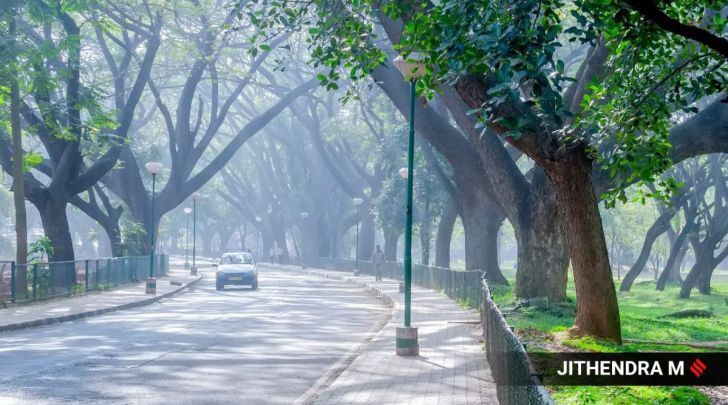
The park itself was to be a beautiful ornament to the Attara Kacheri, where the administration was centralised, which in Sir Cubbon’s time was based in Tipu Sultan’s palace, closer to the pete – the Old City area built under Kempe Gowda. The sections he occupied as an office have since ceased to exist, and were worn out even in the 1800s. Sankey had his fill of challenges – the fact that the Attara Kacheri is built wide and low, covering a large amount of horizontal space, is down to the fact that Sankey had to contend with the unique geology of the area, something that plagues Metro builders to this day. The Statue of Sir Cubbon was moved there in 1870, as soon as the park was ready.
Naming and renaming
However, the park did not initially take the name of Sir Cubbon, but was christened after General John Meade, a veteran soldier who was in charge of the Commissionerate after Cubbon’s successor Lewin Bentham Bowring. By 1866, the Wodeyars had managed to secure their place in their ancestral kingdom once more – a royal writ from Britain meant that as soon as Chamarajendra Wodeyar turned 18, the rule of the Mysore kings would be restored in 1881. General Meade was determined to hand over the province in “perfect order”, according to Roopa Pai’s book ‘Cubbon Park: The Green Heart of Bengaluru’. After his departure in 1873 for an assignment in Baroda, Meade’s Park was renamed after Sir Cubbon.
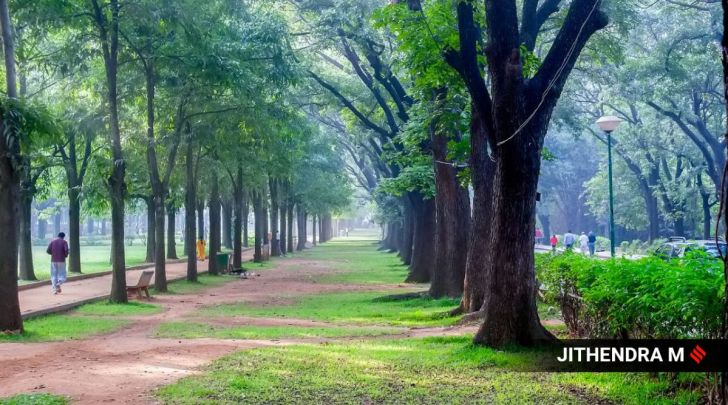
A major event in Bengaluru’s history would later witness yet another renaming of the park after Chamarajendra Wodeyar, which is still its official name to this day. This happened in 1927 which marked the Silver Jubilee or 25 years of the rule of Nalwadi Krishnaraja Wodeyar. But today, even in a city and state where the memory of the Wodeyars is held in deep reverence, an old Manxman who stayed in Mysore until ill health sent him back home has not been forgotten.
May 03: Latest News
- 01
- 02
- 03
- 04
- 05


